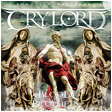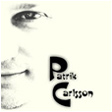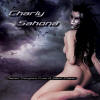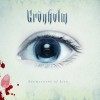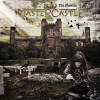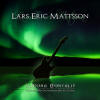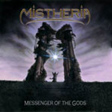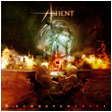|



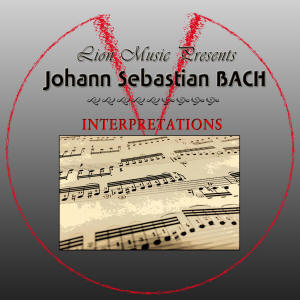
LION MUSIC PRESENTS: JOHANN
SEBASTIAN BACH - INTERPRETATIONS
Some of the best artists from Lion Music's roster interprets the music
of perhaps the greatest composer ever in new exciting arrangements.
|
1.Boguslaw Balcerak’s Crylord : Sonata
in E minor,- Andante BWV 528
2. Robert Rodrigo (Airless) : Brandenburg Concerto No 4 G
major - Andante BWV 1049
3. Patrik Carlsson : Brandenburg Concerto No 6 B-flat Major -
Allegro, BMW 1051
4. Charly Sahona (Venturia): Orchestral Suite no 2 in B minor
- Badinerie 2 BWV1067
5. Grönholm : Orchestral Suite no 3 D major - Air on a G sting
BWV1068
6. Lord of Mushrooms : Well-Tempered Clavier, Book I: No. 2 In
C minor, BWV 847
7. Boguslaw Balcerak’s Crylord : Orchestral Suite No.2 in B
minor- Rondeau BWV 1067
8. Pier Gonella (Mastercastle): Toccata & Fugue D minor BWV
565
9. Lars Eric Mattsson : Oboe Concerto in D minor (Marcello)
Adagio BWV 974
10. Mistheria : Toccata Dorica BWV 538 "Inferno"
11. Ashent : Cantata - Widerstehe doch der Sunde BWV 54
|
Excecutive Producer: Lars Eric Mattsson for Lion Music 2014/2015.
LION MUSIC
PRESENTS: JOHANN SEBASTIAN BACH - INTERPRETATIONS is released as
digital download on January 23, 2015.


1.Boguslaw Balcerac’s Crylord : Sonata in E minor,-
Andante BWV 528
Boguslaw Balcerak
- guitars, bass, keyboards
Marcin "Kanclerz" Kwasny – drums
Mixed and Mastering by Chris Aiken at Studio 124
When
I At first heard the organ version in the original it was much slower.
It is very typical but really touching Bach’s composition. I decided to
make a much faster arrangement. After analyzing and understanding the
work I added a church organ and some strings to the track. For variety
in place of some of the themes and melodies I put arpeggios based on
them. The solo part was written by me although it is still based on the
original. It is worth the attention to check out the lines at the end
of the piece, the original music of Bach, sounds almost like jazz.
Interesting drums part is added by Marcin "Kanclerz" Kwasny.

2.
Robert Rodrigo (Airless) : Brandenburg Concerto No
4 G major - Andante BWV 1049
I had never done anything of classical music before so to participate
in this album and interpret a subject of one of the greatest composers
in the history, has been for me a challenge and an honor.
I chose Brandenburg Concerto No 4 -. Andante BWV 1049 because it made
me feel something very familiar in my mind. I knew I could adapt it in
a very natural way, so I did not think much more and got to work.
First I learned the song and I interpreted it as it was. Later I
thought how I would compose and interpret, like I would like it to
sound to me. So I started from the beginning, note for note, part by
part, to create the story without losing the essence, to lead to a
chorus where I express myself freely. The fundamental bass, and as
faithful to the original topic, take me a lot work to
concrete and seal up the harmonies. For the guitar and the song could
shine, I assumed many headaches.
The rhythm base, i made it at once (Drums and bass) and then record it
in different sessions. When I was all prepared base, I recorded the
guitar for which I used my Ibanez rgt 3020 with dimarzio pickups paff
pro and ernie ball strings, an Orange Rockerverb 100 amp,
taking the sound with 57 sm Sure microphone directly to the sound
card.

Robert Rodrigo -
All Instruments
3. Patrik Carlsson : Brandenburg Concerto No 6 B-flat Major -
Allegro, BMW 1051
Patrik Carlsson -
All Instruments
A
fantastic song where Bach experimenting with a little odd combination
of instruments you do not hear very often. I got hooked on the "royal
feeling", how the instruments have been arranged together and the many
great variations in the 12/8-sign.
After listening to the orchestra and studying the sheet music on this
piece, I wanted to record a modern drums / bass /guitar-version of this
old song. I took the liberty to arrange this work for one solo guitar,
instead of 3-5 different guitars. I wanted to put my own touch to this
piece by increasing the pace a bit, tune down one step and add a "few
notes" here and there. I've also changed a bit in the arrangement and
do not hope that Bach, turn in his grave when he hear this :)

4. Charly
Sahona (Venturia): Orchestral Suite no 2 in B minor - Badinerie 2
BWV1067
Charly Sahona - All Instruments .
Arranged, recorded, programmed and performed by Charly Sahona
"Having the opportunity
to record a composition of J-S Bach was something very special for me .
Just like If I went back to my early age when I was studying classical
at the conservatory of music .
About the arrangement I
did, I decided to melt the best of both world and play this
"Badinerie" in a classic rock-metal style : Just like the guitar
players I was listening to when I was a kid.
I've never had the
opportunity to do it and had a lot of fun doing it.
My recording is a sort
of tribute to the music I first listened to "
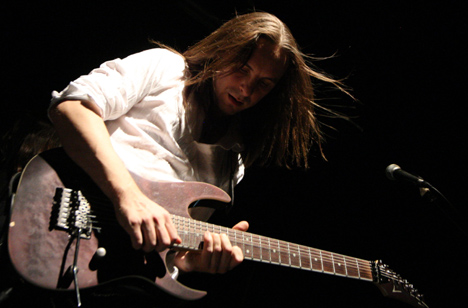
5. Grönholm : Orchestral Suite no 3 D major - Air on
a G sting BWV1068
Mika
Grönholm
guitars / synth, Tom Rask Drums, mixing: Riku
Turunen-Rantioja
We
obviously had to think of how to accomplish the arrangement to be rock.
Its kind of hard to think what to do and not to change the song of the
genius mind of Bach himself.
..Anyway the task is to bring these songs a new outfit so something has
to be done, even some might feel it to be wrong if they like just the
original versions. Music is supposed to be fun so there is nothing
wrong with different and new versions.
We did not want to make dramatic new parts to this song, just a short
growing intro in the start. I wanted to have a few synth tracks in the
background, guitar leads, bass and drums. With those elements we
followed the original song, but with rocking drums arranged by Tom Rask.
To make those drums work even more I played and followed the drums with
the Hamer 12-string bass.
..So the lines of drums and bass circling around the melody is what we
were after. For drums part, Tom was trying many options until he pick
the so called serious-while-heavy one, Meaning, moving from tom rhythms
to hi-hat one to be clear and big. fills are not fast and there is
space for guitar and other things to do their thing. One challenge was
to follow the song being without any straight click, as often the
classical compositions seem to be: very airy... but everything actually
came out okay and smooth without even the help from absinth fairy.

6. Lord
of Mushrooms : Well-Tempered Clavier, Book I: No. 2 In C minor, BWV
847
Mixed and Mastered
by Damien Raynaud at Dirty Icon Productions, L.A.
We were very pleased to be part of this challenging project proposed to
us by Lion Music. Here are some details about this work we did on the
piece by Bach:
We opted for the "Well-Tempered Clavier », more precisely Prelude
N° 2 in C minor " (BWV 847) taken from book 1 The Well-Tempered
Clavier is an ensemble of 24 solo keyboard "Preludes and Fugues » each
one of them written in all 24 major and minor keys. Pushing the
reflexion even further, one might consider this collection of
pieces as being a concept album of the epoch!
From the very beginning our idea was to blend our style with this
particular Bach prelude, without modifying either the harmony or the
layout of the voices, played in our case by the guitars and the
piano. We decided therefore, to concentrate on the rhythm: lengthening
and modifying the original rhythmic structure, plus adding an
extra voice in order to create a new Bass part, which would
sustain the drums.
Only at the end of the Prelude on the "presto", did we return to the
original Bach score putting an end to the "Mushrooms effect
».
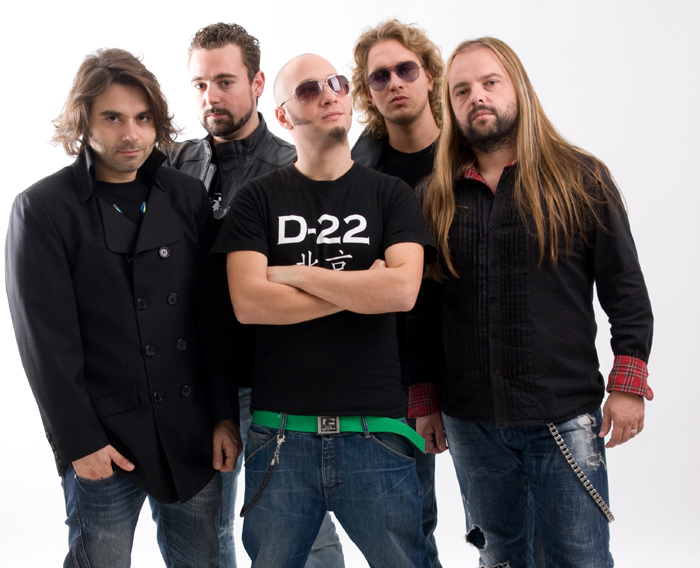
7. Boguslaw Balcerac’s Crylord : Orchestral Suite No.2 in B
minor- Rondeau BWV 1067
Boguslaw
Balcerak - guitars, bass, keyboards
Marcin "Kanclerz" Kwasny – drums
Mixed and Mastering by Chris Aiken at Studio 124
I decided immediately to make my own
arrangement of this composition when I first heard it. This Rondeau is
a part of the well-known Bach’s suite no.2 in B minor. It is not as
famous as Badinerie from the same suite but I could see that it had
great potential. It was written by Bach for flute, strings and basso
continuo. In the original, this Rondeau’s lasting less than 2 minutes.
I decided to repeat the most interesting parts of it and add a guitar
solo. This part was also arranged by me based on the original theme. I
added some church organ chords and I really think that Marcin
€"Kanclerz” Kwasny did a great job on drums.

8. Pier Gonella (Mastercastle): Toccata Dorica BWV
565 "Inferno"
Pier
Gonella - All instruments, Giorgia Gueglio, choirs and spoken vocals,
Recorded by Pier Gonella at MusicArt studio, Ge, Italy
It was an
honor for me to arrange this masterpiece, but in the same time s lot of
hard work, first because the sound of the organ is completely different
from the electric guitar, bigger and full of frequencies, high and low;
second because the Toccata and Fuge is a very popular classical theme
and there are so many great versions of it, so I had to think a lot and
come up with something different.
Finally I came up with the idea of putting in the foreground the rhythm
section over the usual solos,tapping, pull off etc...
In the intro section I splitted the guitar track into a 3 lines, a
driven sound, an octave lower and a sound with phaser. In the rest of
the song I recorded 4 rhythm guitars and worked a lot to find the most
suitable sounds for the drums and bass. Another feature is the
inclusion of some vocal lines and melodies, by Mastercastle's singer
Giorgia Gueglio, who also added some whispered words introducing the
song after the intro section.

9. Lars Eric Mattsson : Oboe Concerto in D minor
(Marcello) Adagio BWV 974
Lars Eric Mattsson - Guitar, Bass and
Organ. Christer Jansson - drums
I have a lot of Bach music in my collection but for this album I was
thinking I should find something lyrical that would be easy to
rearrange however once I had chosen this track which I later found out
was originally written by Marcello but later rearranged by Bach (and
now by me) it proved to be more of a challenge than I thought as I
wanted to completely change the rhythm from 2/4 to 6/8. The first
secotion was no problem but later in the tune the only way to retain
the original melody meant I had to go back and forth between 4/4 and
6/4 so while it may sound simple it really is not. I am playing a
Fender Stratocaster with true temperament neck and Seymour Duncan
pickups though a Soldano SLO100 as well as my 70-ies Rickenbacker bass
through an API recording channel. I opted for retaining the original
melody and not to add to much unnecessary shredding. there is a bass
solo near the end of the tune, in Bach's arrangement this part was a
slow laidback section without much of a melody. One problem with making
rock versions of classical music is that a chamber orchestra or
symphony orchestra allows much more dynamics than you can achieve
within a rock setting. Anyway, I had much fun doing this track and I
look forward to doing something like this someday again.
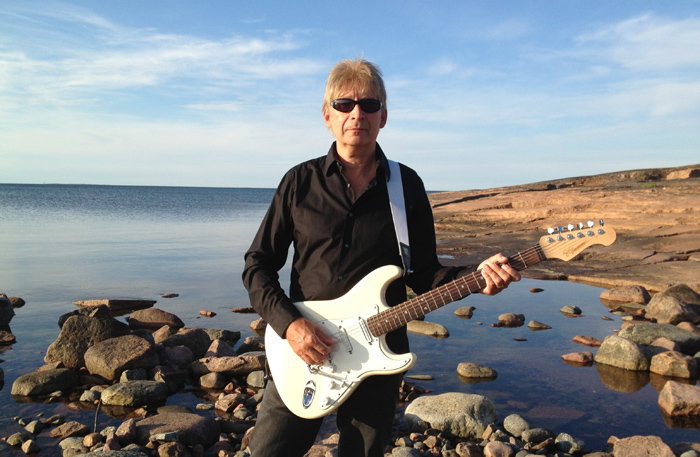
10. Mistheria : Toccata Dorica BWV 538 "Inferno"
Johann Sebastian Bach's “Dorian” Toccata BWV 538 has always been one of
my Bach's top works and one of my favorite masterpieces ever. I learned
and played it on Pipe Organ during my studies at Music Conservatory and
I've always been fascinated by its powerful and majestic sound, to not
mention its evocative and “metal” theme.
My idea behind the arrangement of this masterpiece was that I should
not cover each single original note, but “capture” the idea behind, the
“meaning” and elaborate it mixed with what's in my own taste and style.
It's like it happens when writing a Fugue in which the main theme
(subject) is elaborated several times without never loosing the
“umbilical cord” with the opening subject theme. Next element I
considered has been to “transpose” the original score for Pipe Organ,
which is my Classical main instrument, to the Synthesizer, my Metal
main instrument. Simply, I didn't want it played on a Pipe Organ
because that would be too obvious and it already exists this way, I
could not, for sure, make it better than original.
In the arrangement, the original main themes featured in this legendary
Toccata are played by analog and digital synth sounds, alternating them
with originally written vocal, choir, piano, guitar parts and keytar
solos, in the way I've always wished to play since my first approach
with this legendary work. Adding choir is just what I love because
there is no other sound which can give such a majestic atmosphere
combined with a powerful “Tutti” pipe organ.
I nick named the arrangement “Inferno” because that is the place where
the “Dorian” Toccata brings me when playing it on a Pipe Organ. There
are elements scattered here and there over the arrangement which
reminds that kind of atmospheres, the opening sound introduces you just
there...
Small curiosity: the middle Piano part came out accidentally. I was
rehearsing that section on my keyboard and expected to have a synth
sound selected, instead pressing the keys it was a Piano sound
playing... I loved that “voltage drop” and, matter of a second, I
decided to make a “space” in the arrangement with an almost
“Romanticism” insert.
I hope that my arrangement didn't disappoint Mr. Bach which is the
father of Rock music, and You which are the most important aim of my
work. In the end, thanking Johann Sebastian and You, I conclude sharing
with this my recurrent thought about him: “I'd love to be, just for a
day, in the mind of the greatest music genius ever lived, than I could
die.”
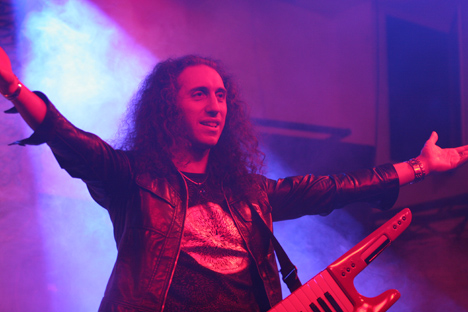
11. Ashent : Cantata - Widerstehe doch der Sunde BWV 54
Arranged by
Alessandro Cossu and Ashent
Mixed at Artesonika
Studio, Pordenone IT by Ivan Moni Bidin and Ashent
Originally conceived for alto, two violins, two violas and continuo,
this sacred cantata was composed by J. S. Bach in 1714 while working as
organist and Konzertmeister at the ducal court of Weimar. Ashent
present here the first Aria as an instrumental piece for guitars, bass,
double bass, piano and synthesizer. This version maintains the original
contrapuntal weavings and harmonic complexity Bach is so well known
for, while adding some improvisational elements in the guitar parts.
The use of a sour electric guitar for the alto part singing the
religious text by Georg Lehms makes possible a decontextualization of
this piece from its original lutheran setting to become absolute music.
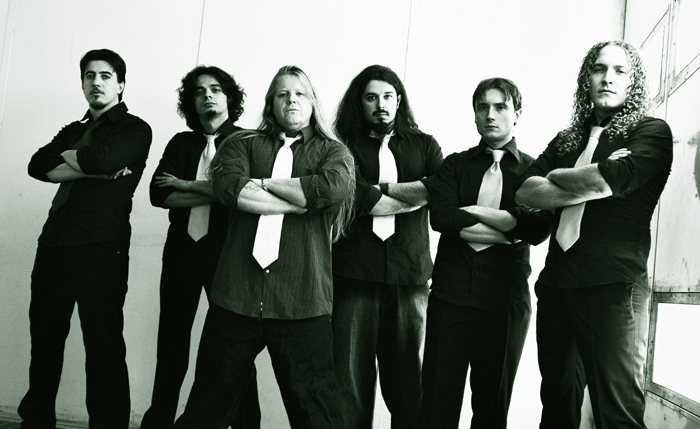
MORE
MUSIC FROM THESE ARTISTS:


|
















